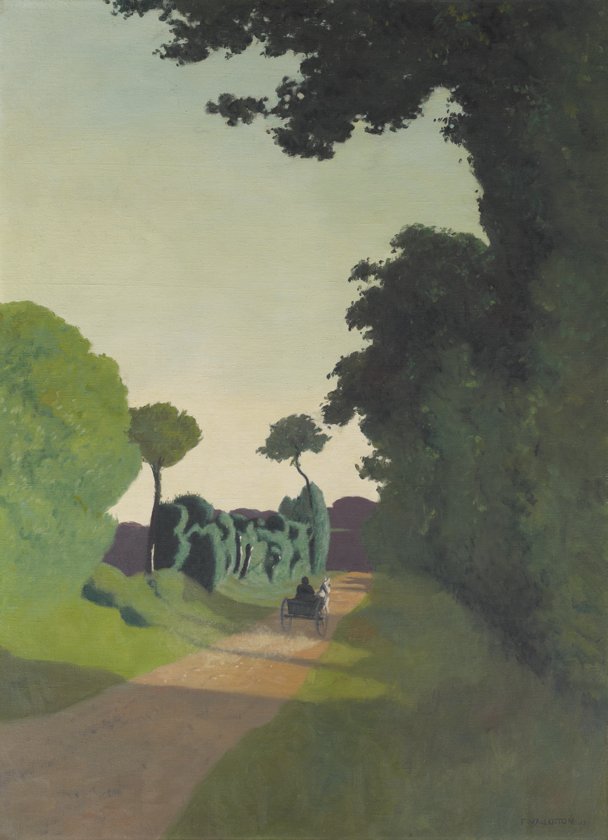Vallotton – La charrette

Félix Vallotton, La charrette, 1911
Kunst Museum Winterthur, Hahnloser/Jaeggli Stiftung
Foto: Reto Pedrini
In 1909, a new form of landscape painting emerged in Vallotton's work, the so-called paysages composés, or composed landscapes. This refers to a tradition within landscape painting that included the classic genres of paysage historique and paysage héroique. The composed landscape means that it was not painted from nature, on location in the open air, but from memory or from sketches in his studio. This distinguishes him fundamentally from the Impressionists, who wanted to capture the fleeting nature of the situation, the momentary light and the mood. Vallotton, on the other hand, sought a synthesis, a timeless quality.
Most of his paysages composés were based on impressions he had made during his travels to Normandy and the south of France, but executed days, weeks or months later in his Paris studio. He had sketched numerous scenes in pencil on location and thus created a stock of images, ideas and landscapes, which he later assembled into his own compositions.
Usually, Vallotton worked with large areas that he juxtaposed with each other, as in La charette from 1911. Here the shades of green are characterised by light and shadow. The trees are summarised, as though he had combined countless numbers of them into these few. The large expanse of sky contrasts with the massive dark shadow zone on the right. The diagonal of the path is a source of energy, and the small, title-giving wagon in the centre of the picture provides a subtle narrative note that may tempt the viewer to reflect and speculate.


